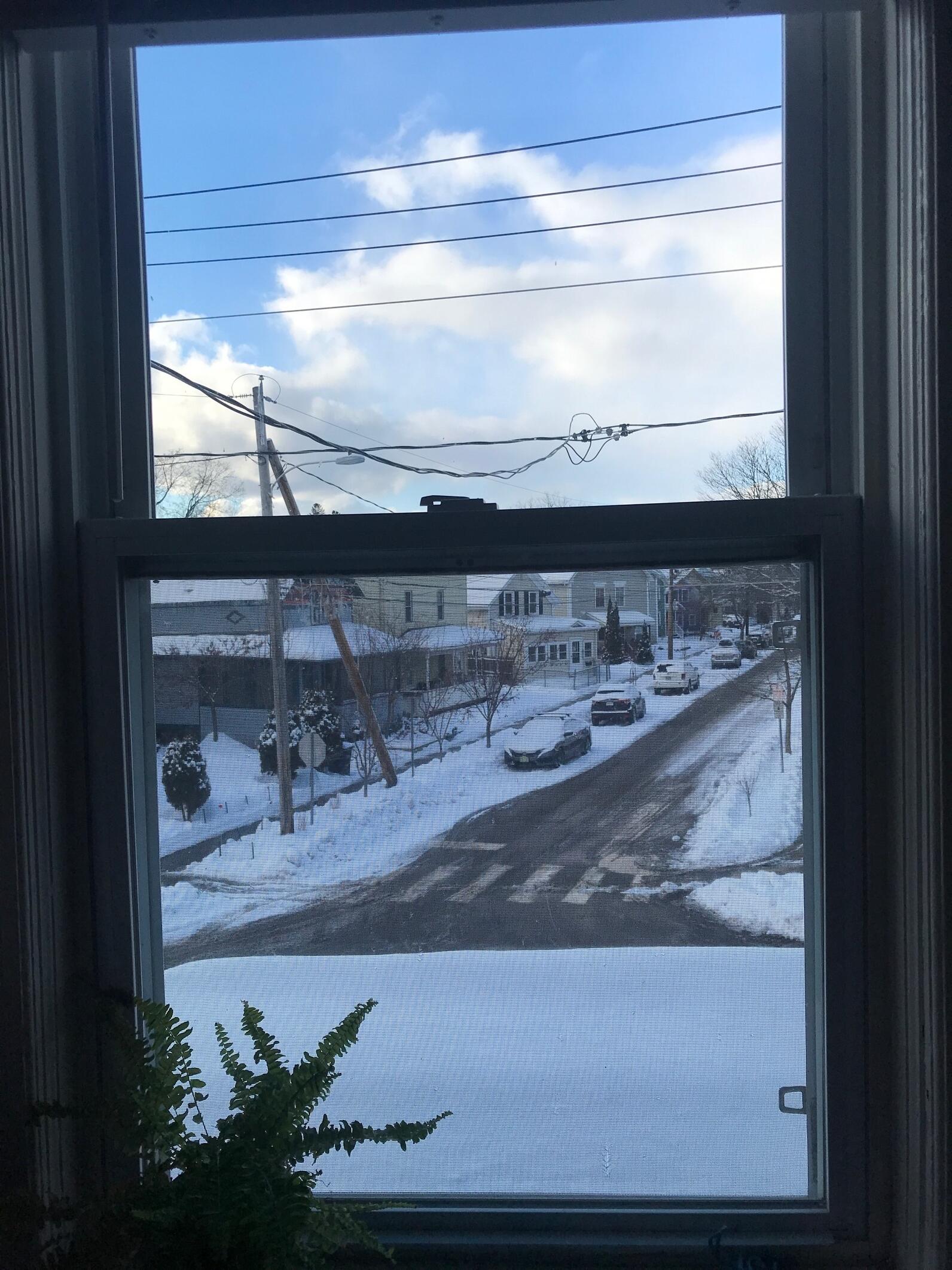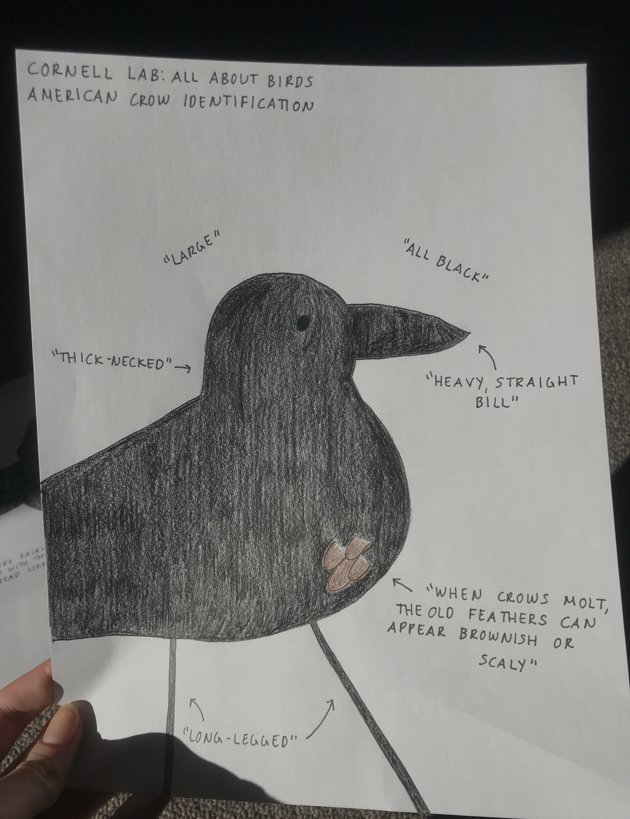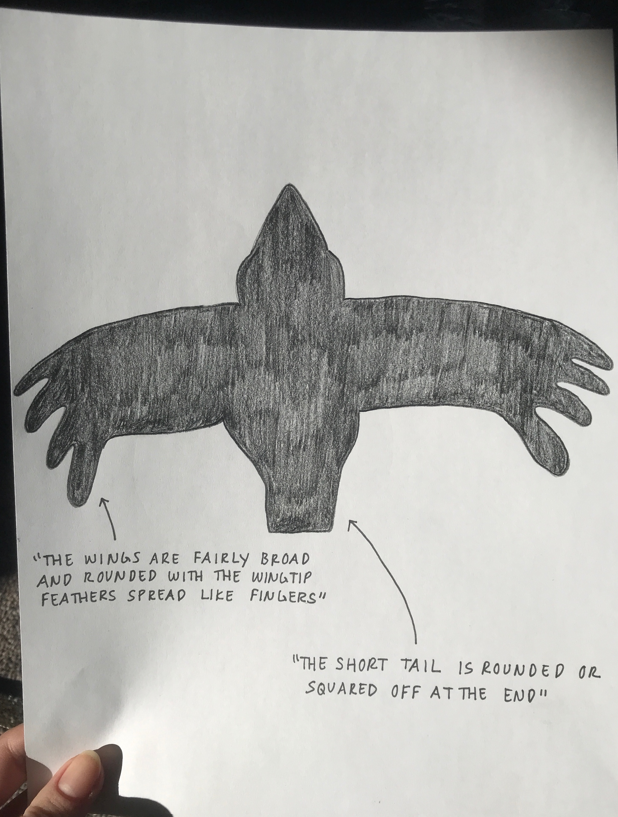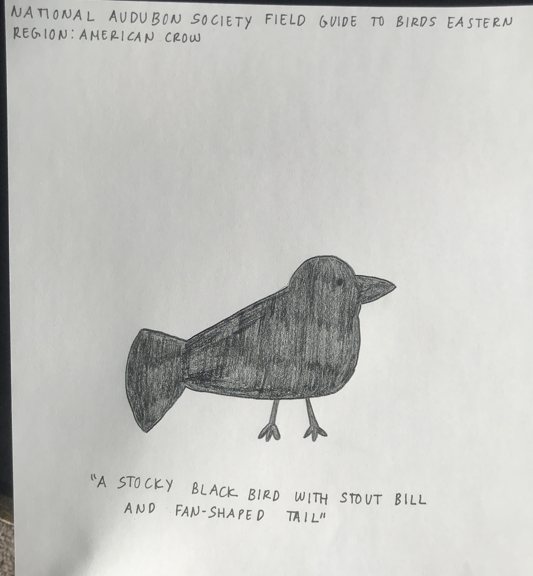Like much of the world right now, I have been spending a lot of time at home. Like…a LOT. I’m tucked away in an apartment in the Old North End of Burlington and while I’ve been living here for five years now, I’m a New Jersey native and I don’t feel like I have or will ever entirely adjust to Vermont winters. Like another big chunk of the world population, I’ve always struggled with isolation in the months with low temperatures and short days and getting through it in a global pandemic has been a monumentally more daunting task. I’ve been cycling through my fair share of hobbies (baking, puzzling, painting, crosswords, quilt making, reality TV watching, and a brief furniture kick)—but more and more recently I’ve been growing jealous of the social lives of the crows outside my windows.
I admire (and long for) the motivation that I see so many of my birder friends have to go out and find rarities this winter, and to really take advantage of the pandemic to find time for birding. To be completely honest, my birding recently has consisted almost exclusively of what species I spot on my walk out of my apartment to take out the trash. But as we’ve seen over the past year now—we’ve just got to make do. Just as cute work-from-home sweatpants have become a thing, I want my trash walk birding to take flight (good pun, or no?). I am decidedly using crows as my inspiration and I am going to make my journey into learning all that I can about crows as glamourous as possible.
Resources are linked to the bottom of this article to further your exploration of American Crows!
Week One as a Crow Fanatic
I decided the best way I could dive into becoming an American Crow expert would be to dedicate a journal entirely to my crow notes. In any given day I spend my time in about four to five different rooms—my bedroom, my living room, my dining room, kitchen, and bathroom. My bedroom unfortunately does not have any great crow viewing spots, but since I use my coffee table more as a desk than my actual desk anyway it makes sense that my living room become my indoor crow-watching outpost. Here are the windows (and views) I’ll be working with:

After scribbling down some observations about the crows I had seen and heard outside my apartment throughout that day, I wanted to dive into research. For me, this meant taking all my bird books off my shelves and familiarizing myself with all that I could about crows. I can’t hold myself accountable to learning anything new about crows without first verifying that I could properly identify them:
ID Info:
- “A stocky black bird with stout bill and fan-shaped tail” (National Audubon Society Field Guide to Birds Eastern Region)
- “A large, long-legged, thick-necked bird with a heavy, straight bill. In flight, the wings are fairly broad and rounded with the wingtip feathers spread like fingers. The short tail is rounded or squared off at the end” (allaboutbirds.org)
- “American crows are all black, even the legs and bill. When crows molt, the old feathers can appear brownish or scaly compared to the glossy new feathers.” (allaboutbirds.org)
I started to look at these different bulleted notes and ID tips and wondered, without a previous understanding of what a crow looks like, would these descriptions result in me having a clear image of what a crow looks like in my head? Hence my newest quarantine birding game: Reverse Bird Pictionary.
You will need:
- Drawing utensil
- Paper
- Access to online bird field guide or guide books
Since I’m looking at life through a crow-centric lens now, I took the descriptions noted above as directions on how to draw some crow friends:



It’s a game that I think could be more fun with a bird that allows me to use more than one or two colored pencils, but one I had fun with nonetheless. As this was a solo activity and I chose to focus on crows there was no element of surprise, but what I envision is being able to read different bird descriptions to friends (omitting species names!) and seeing how close to an accurate drawing of the bird they can get from the identifying factors.
In the meantime, I’m excited to keep moving forward with my connection to crows. I’m looking forward to all my crow-related learning and crafting goals (a list that keeps growing!), and I hope that we can all find some inspiration in whatever form birding in a global pandemic may take.
Crow Resources
- How to tell a Raven from an American Crow - Article from the National Audubon Society highlighting the key differences between these lookalike species
- Crows in Vermont - This is a project through iNatrualist that aims to track and map Crows In Vermont.
-
Go on a virtual Crow hunt! Naturalist and educator Teage O’Connor has been counting crows in Burlington for the past 12 years.





